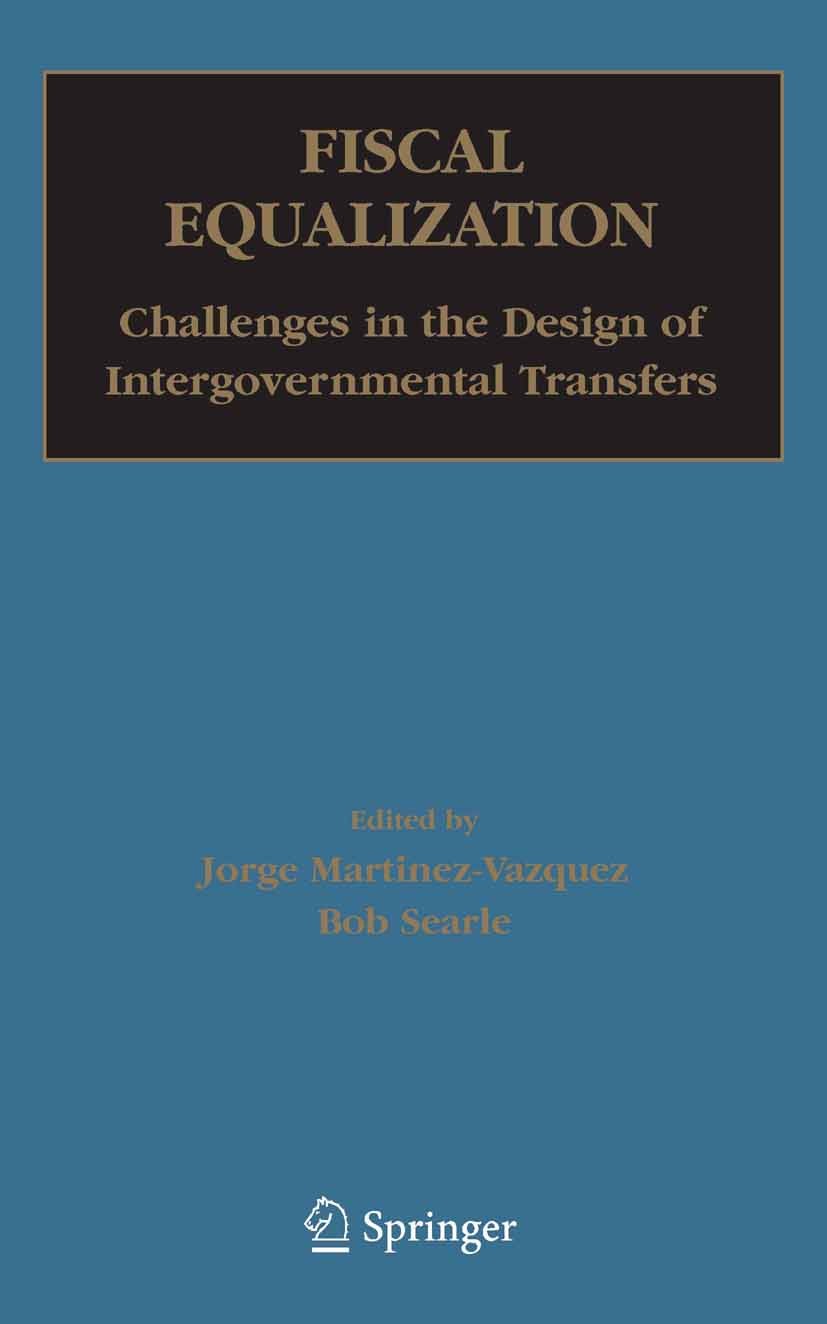| 书目名称 | Fiscal Equalization | | 副标题 | Challenges in the De | | 编辑 | Jorge Martinez-Vazquez,Bob Searle | | 视频video | http://file.papertrans.cn/344/343887/343887.mp4 | | 概述 | Offers academics and practitioners a thorough, thematic assessment of unresolved issues in the design of equalization grants.Experts from across the globe address institutions, designs, methods, and p | | 图书封面 |  | | 描述 | Each endogenous variable in the model is a function of the exogenous For later discussion, it is useful to explore this in variables and parameters. more detail for one of the endogenous variables, for example the grant to State i. In this regard, one can define from (6) the per capita grant to a State as where F = [s N] is a vector of variables determined by the federal government, P = [p, p,] is a vector of the local public good prices, CGC = [I, pi c] is a vector of variables determined by the CGC and S = lq, q,] is the strategy set of the two States. Within F, the variable s is determined by the federal government. The total federal population N is determined by things such as the birth and death rate, but also by international migration and hence, to some extent, the population policy of the federal government. Within the vector CGC, the variables yi , pi, c are all determined by the CGC, while the public good provision levels within S are determined by the States. As discussed below, we assume that each State perceives s, N, public good prices and the CGC variables (except the adjustment term c) to be exogenously given. This is reasonable since in practice the States have no | | 出版日期 | Book 2007 | | 关键词 | Fiscal Equalization; Grants; Poverty; development; economy; efficiency; infrastructure; migration; options; o | | 版次 | 1 | | doi | https://doi.org/10.1007/978-0-387-48988-9 | | isbn_softcover | 978-1-4419-4314-9 | | isbn_ebook | 978-0-387-48988-9 | | copyright | Springer-Verlag US 2007 |
The information of publication is updating

|
|
 |Archiver|手机版|小黑屋|
派博传思国际
( 京公网安备110108008328)
GMT+8, 2025-8-29 17:21
|Archiver|手机版|小黑屋|
派博传思国际
( 京公网安备110108008328)
GMT+8, 2025-8-29 17:21


